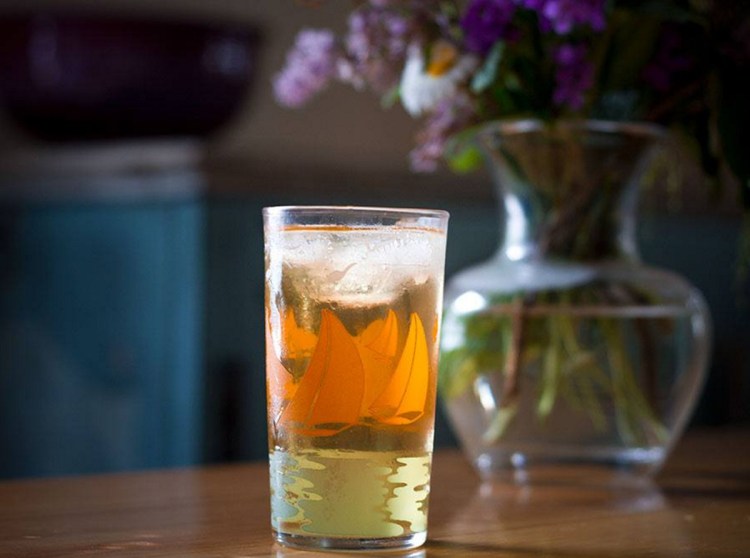Martin Connelly, co-owner of The Little Red Cup Tea Co. in Brunswick, serves up some pointers.
Summertime is iced tea time. With this week’s weather forecast pointing to a long stretch of hot, humid days, it’s a good idea to keep a pitcher handy in the fridge for some quick refreshment.
We consulted Martin Connelly, co-owner of The Little Red Cup Tea Co. in Brunswick for advice on how to make the perfect pitcher of iced tea.
Connelly’s first piece of advice: Go with a cold brew. It’s easier, faster and practically foolproof, and you can make it the night before – helpful if you’re planning a summer gathering. You can use either green or black tea, but Connelly says more tea drinkers are gravitating to green tea these days because it’s smoother and often less bitter than black tea.
To make cold-brew tea, use an ounce of tea leaves per half-gallon of finished tea. (An ounce of jasmine green tea is equivalent to 5 tablespoons.) Place the leaves in a jar and pour cold, filtered water or spring water (never distilled water) over them. Leave in the refrigerator or on the counter for 12 hours or overnight. Strain, if necessary, and serve. (Another advantage to cold brew, Connelly says, is that the tea leaves tend to sink to the bottom of the jar so you can often skip the straining and just pour off a glass.) For best quality, drink within two days.
If you don’t have 12 hours to wait, make hot tea and then ice it down. You start with the same amount of leaves as with cold-brew tea. If you normally steep hot tea for two minutes, extend it to four, in other words double the time. The result will be slightly more bitter than cold brew tea both because of the extended steeping time, and the fact that hot water pulls more tannins out of tea leaves.
Most black teas do best in water that is not quite boiling, Connelly says, but you can also bring the water to a hard boil and then turn it down for a minute or so. According to the wisdom that’s come with thousands of years of tea drinking in China, the bubbles in the boiling water should be “reminiscent of fish eyeballs,” Connelly said.
Take the boiling water off the stove and pour it over the tea leaves. Remember, Connelly advises, that you’re always adding water to tea, not tea to water.
What’s the difference? Connelly paused a moment, then replied, “I’m staring at the ceiling trying to think of an answer that doesn’t sound pretentious.”
The serious answer has to do with how the water interacts with the leaves. If you add tea leaves to hot water, some will just be sit at the top and stay dry unless they’re thoroughly stirred in. When the water is poured over the leaves instead, the leaves all get wet at the same time, in the same way. “If you don’t infuse tea well,” Connelly said, “it doesn’t taste as good.”
(We still don’t get it, but we’ll take his word for it.)
Connelly suggests adding mint to your iced tea this time of year. Use gunpowder green tea, he says, which is strong and will make a tea similar to the traditional mint green teas of Morocco. Muddle the mint leaves, or otherwise break them up, and add them to the jar when you add the tea, before pouring in the water.
The biggest mistake people make when it comes to making iced tea? Using tea bags, Connelly said. The tea in tea bags is what’s left after all the good stuff has been packaged and taken away. Tea bag tea has a lot more surface area than tea leaves, which is why you see lines of color curling out from the bag as soon as it hits the hot water. The tannins are extracted almost immediately.
“It doesn’t taste as much like tea,” Connelly said. “It tastes a lot like the chemical compounds in tea, but less like tea itself. It’s not a sin to do it, but it creates a beverage that is basically green or brown and bitter.”
Meredith Goad can be contacted at 791-6332 or at:
mgoad@pressherald.com
Twitter: MeredithGoad
Send questions/comments to the editors.




Comments are no longer available on this story